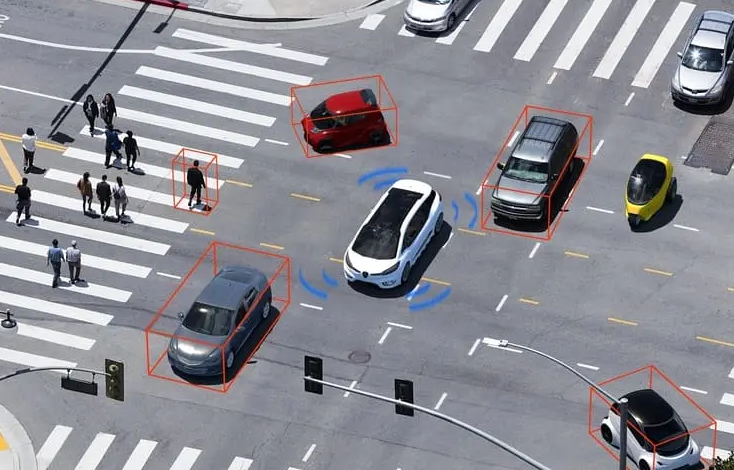How Traffic Signal Violation Detection Enhances Road Safety in Cities

Urban traffic has grown more complex with each passing year. As cities expand and vehicle ownership rises, maintaining road safety becomes increasingly challenging. Amid the hustle of congested streets, signal jumping and red-light violations remain among the most common—and dangerous—forms of traffic offenses. These infractions not only endanger the violator but also put pedestrians and other road users at serious risk. In this context, traffic signal violation detection systems are emerging as indispensable tools for modern city traffic enforcement.
The Need for Smarter Traffic Enforcement
Conventional traffic enforcement methods have long relied on manual surveillance or basic camera systems, often failing to capture the full scope of violations. In high-traffic zones, police personnel are overwhelmed, and enforcement becomes selective rather than consistent. The result is a lack of deterrence, emboldening repeat offenders.
This is where automated traffic signal violation detection systems bring transformative value. By leveraging intelligent monitoring technologies, these systems provide real-time, continuous surveillance—ensuring no offense goes unnoticed. The implementation of such solutions leads to better compliance, reduced road rage, and fewer life-threatening accidents at intersections.
What Is Traffic Signal Violation Detection?
At its core, traffic signal violation detection is a system that identifies and records instances when vehicles cross an intersection after the traffic signal has turned red. These systems typically use high-definition cameras, embedded sensors, and real-time data processing to accurately track vehicle movements.
Modern systems are capable of:
- Capturing the license plate of violating vehicles
- Timestamping and geotagging incidents
- Sending automatic alerts or generating e-challans
- Integrating with city-wide traffic management platforms
Benefits for Road Safety and Urban Planning
1. Enhanced Deterrence and Driver Discipline
When motorists are aware that violations are being monitored continuously and accurately, they are more likely to comply with traffic signals. This behavioral shift significantly reduces the number of red-light violations over time.
2. Reduced Collision Risks at Intersections
Intersections are statistically high-risk zones for accidents. By enforcing strict adherence to red signals, cities can drastically reduce T-bone and side-impact collisions, which are often fatal.
3. Data-Driven Traffic Optimization
Beyond enforcement, these systems generate vast amounts of actionable data. City planners can analyze patterns, such as peak violation times or high-risk intersections, and make informed decisions regarding signal timing, road design, and public awareness campaigns.
4. Operational Efficiency for Law Enforcement
Manually catching violators is resource-intensive and often ineffective. Automated systems shift the burden from traffic officers to technology, freeing up human resources for other critical tasks.
5. Transparency and Accountability
Every detected violation is backed by time-stamped images and data, reducing disputes and enhancing fairness in the penalty system.
See also: Equipment Hire vs Full Service: Why DIY Industrial Cleaning Often Backfires
The Role of AI in Violation Detection
Artificial Intelligence has revolutionized the way traffic systems operate. Through AI-enabled video analytics, detection systems can now:
- Differentiate between vehicle types
- Adjust for poor lighting or weather conditions
- Minimize false positives through context-aware analysis
By continuously learning from incoming video feeds, these systems become smarter and more accurate over time.
In fact, recent developments in AI video analytics improves operational efficiencies across various traffic monitoring tasks, including red-light enforcement, vehicle classification, and congestion analysis.
Top 5 Companies Offering Traffic Signal Violation Detection Services
While many technology providers are active in this space, a few have distinguished themselves with innovation and scale:
- Kapsch TrafficCom – Known for smart mobility solutions, including red-light violation detection and toll management systems.
- FLIR Systems (now part of Teledyne Technologies) – Specializes in thermal imaging and smart video detection used for traffic safety.
- Vitronic – Offers automated traffic enforcement systems with a strong focus on speed and red-light violation detection.
- Vehant Technologies – Offers AI-powered traffic enforcement systems, including red-light and signal violation detection, tailored for smart city deployments and law enforcement agencies.
- Jenoptik – Supplies integrated enforcement solutions, including red-light and speed monitoring systems.
These companies have been instrumental in deploying scalable, high-accuracy systems for cities worldwide, contributing significantly to road safety and smart city goals.
Challenges and Considerations
While the advantages are clear, implementation is not without challenges. Privacy concerns, integration complexities, and public resistance to surveillance are common hurdles. Ensuring that systems are used responsibly, with clearly communicated policies and data protection mechanisms, is crucial for public trust.
Moreover, regular calibration, system updates, and maintenance are essential to ensure continued accuracy. Cities must invest not only in the technology but also in training personnel and raising public awareness about the importance of compliance.
Conclusion
As urban environments grow denser and road networks more congested, ensuring safety at intersections is non-negotiable. Traffic signal violation detection systems offer a scalable, efficient, and intelligent way to reduce infractions, enhance enforcement, and ultimately save lives.
By combining real-time monitoring with AI-driven insights, these systems do more than just catch violators—they become powerful tools for traffic planning, law enforcement efficiency, and policy formulation. As more cities adopt these technologies, we move closer to the vision of safer, smarter, and more disciplined road networks.







